There are only a handful of countries in the world that like Italy has had an almost uninterrupted presence of Jews on its soil. The Jewish community and its synagogue in Rome are even older than the Vatican and the Catholic Churches. In the year 70ac, the Jews in Rome were 40,000 out of a population of 800,000. There are also very ancient communities both in Syracuse (Sicily) and Venosa, near Potenza (Basilicata).
In the XII century Benjamin de Tudela, a rabbi from Navarra in Castile ( Spain) went on a journey to Europe, Asia and Africa to catalogue the presence of the Jewish communities and to provide an accurate description of their daily life. On his travels, he even stopped to visit the Jews of Lucca and Pisa. His work “Travels of Benjamin”, written in Hebrew, however, took four centuries before being published.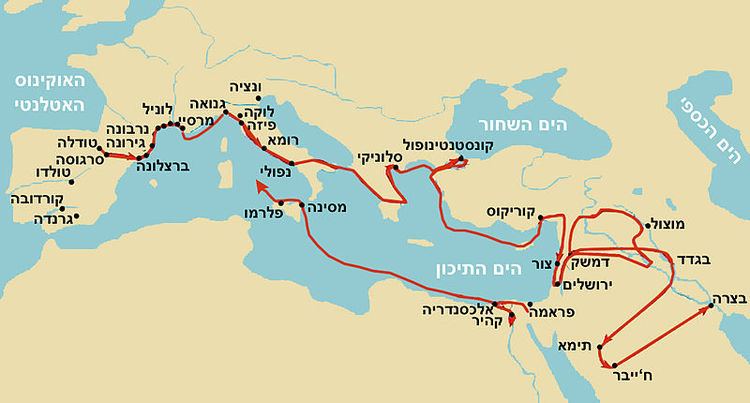
After the Jews were expelled from Spain in the year 1492 [1] the same fate was met by those in South of Italy (Sicily included) which at the time was a Spanish ruled territory. The majority of the 120,000 Italian-Jews settled in Rome and its neighbouring territories. Pitigliano near Grosseto, for example, became known as the “Little Jerusalem”.
To begin with, allow me to commemorate the extraordinary figure of Shabbatai Donnolo.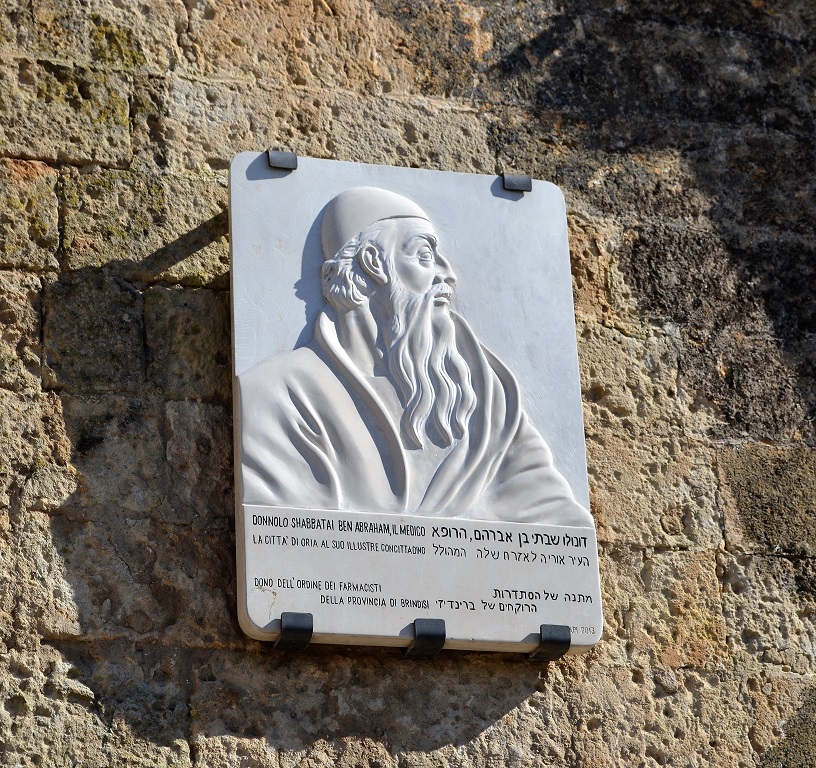
In the tenth century, the Muslims raids in the Mediterranean area intensified and the Saracens even attacked the southern Italian Region of Apulia, on the Adriatic coast. On July 925, they stormed the little town of Oria[2] and killed six thousand people, many of whom were Jews. They then set Oria on fire and left with twelve thousand prisoners whom they reduced to slavery. Amongst the survivors was a 12 years old boy called Shabattai Donnolo, who later in life became one of the most illustrious astronomers, doctors and pharmacologists of Medieval Europe. In his memoirs he thus recalls his experience: “I was set released in the town of Taranto thanks to my parents paying for my freedom (…) and I dedicate my time to many novelties. (…) My eyes had seen all (the destruction) that the hands of man can cause”.
Notwithstanding the many privations in life, Shabbatai received an education and eventually became a doctor. He was the author of the famous “Book of the remedies” which contains over 100 medications. 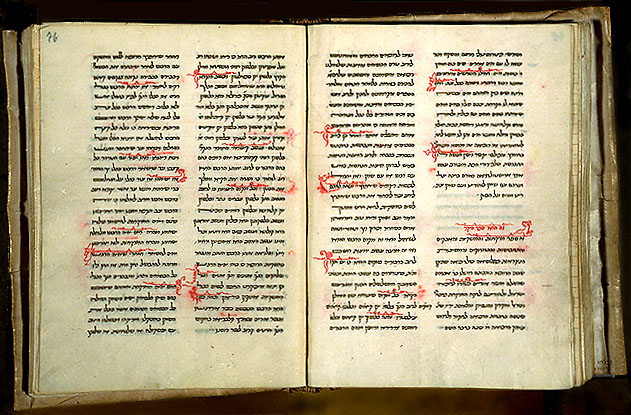
Some great Jewish doctors lived and practised in Italy in the XV century. The following are the names of only but a few of them:
- Elia di Sabbato(Beer)) from Fermo (in the Marche Region), who was Pope Martino V’s physician;
- Yuda Messer Leon, a great rabbi and scholar who received the title of doctor from Emperor Frederick III;
- Guglielmo (Benjuamin) Portaleone , who in Naples was the physician of Ferdiand I and subsequently of Galeazzo Sforza in Milan;
- Davide and Salomone Azeni, who came from the Jewish aristocracy of Palermo ;
- Mordechai Modena , who received the title of doctor in Bologna in 1530 and who was the grandfather of the better-known Leone Modena, rabbi, scholar, poet and author of the chief text of the Kabbala;
- Giacobbe Mantino, who was a philosopher and a translator of Aristotle’s works. He was also the physician to Pope Paolo III Farnese and perhaps the first Jew to have been a teacher in more than one University in his lifetime, something that was not allowed to any other Jew.
The first University chair for Judaism, in Italy, was set up in the city of Bologna in 1464. Others followed and were filled by converted Jews like Vincenzo di Francia, Benedetto di Spagna and Paolo Ricio, a doctor and philosopher from Germany.
During the XIV century, Italy began confining the Jews in Ghettos, causing the Jewish population to go from a high of over 100 000 to perhaps less than 40 000. The extreme extent to which such reduction occurred is represented by the current reality at Pitigliano, the “Little Jerusalem”, which now has only four individuals with Jewish extraction.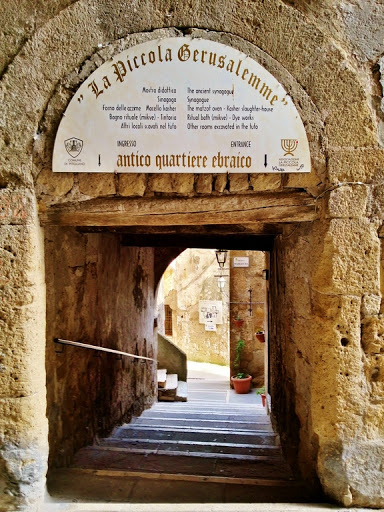
In more recent times many Jews have brought shine and admiration to Italy through their achievements in the fields of Arts, Commerce and Politics. Here are a few examples for you.
- Sidney Costantino -Baron Sonnino – who converted to Protestantism, was the 19th Italy Prime Minister and also the Italian Minister of Foreign Affairs during
- Senator Leopoldo Franchetti was a Liberal and a 19th century expert of the Mafia’s methodology. His analysis of the criminal phenomenon and its modus operandi is still admired and referred to in our times.
- General Giuseppe Ottolenghi fought the brigands of Basilicata and took part in many military campaigns in the service of the Royal House of He was also the first-ever Jew to have been allowed to attend a military Academy.
- The General Roberto Segre fought for Italy in both World Wars and so did General Emanuele Pugliese who, for the record, was accused to have done nothing to stop the fascist march on Rome in 1922.
Numerous were also the Jewish Freemasons who fought for the unification of Italy, a name that in Hebrew is “I-TA-YAH” [3]. Famous patriots of the wars of Independence were the members of the Todros family from Turin and the brothers Angelo & Enrico Usiglio, who assisted the heroic patriot Ciro Menotti.
In Modena, the revolutionary movement was entirely financed by the Jews and amongst its members were: Israel Latis, Benedetto Sanguinetti and Fortunato Urbini. In 1809 a Grand Orient was established in Leghorn. It listed names of many revolutionary freemasons – called “Carbonari” – and a consistent number of Jewish Freemasons like Moses Montefiore who was a member of the Lodge “I Veri Italiani”.
From the unification of Italy onward, the presence of the Jews in the history of Italy is remarkable and endless.
During the Fascist regime, out of the twelve University Professors who refused to 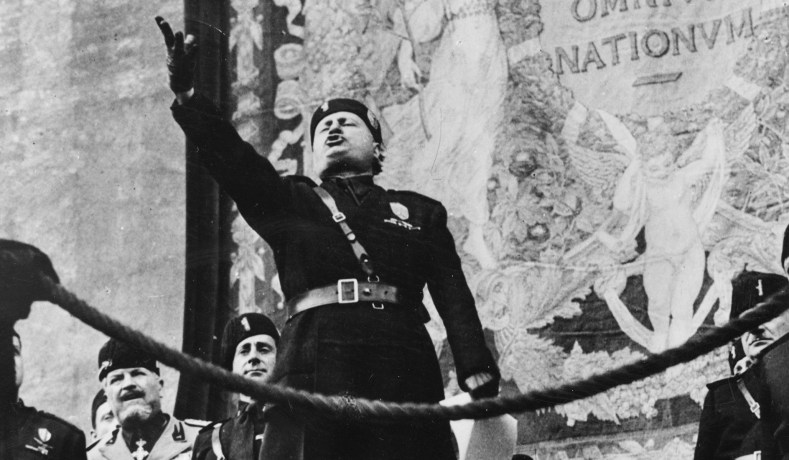 pledge fidelity to the regime, three were Jews: the Chemical Engineer Giorgio Errera, the mathematician Vito Volterra and the Oriental Studies scholar Giorgio Levi Della Vida. It is interesting to note that none of the Jewish Professors who survived the Fascism in 1945, were allowed to return to their original university chairs but were transferred elsewhere.
pledge fidelity to the regime, three were Jews: the Chemical Engineer Giorgio Errera, the mathematician Vito Volterra and the Oriental Studies scholar Giorgio Levi Della Vida. It is interesting to note that none of the Jewish Professors who survived the Fascism in 1945, were allowed to return to their original university chairs but were transferred elsewhere.
Amongst the Italian partisans of the WWII were Eugenio Calo’, gold medallist to the military valour, who was a Jew from Tuscany and Franco Cesana from Bologna. The latter is mostly known with his code name of “Balilla” and was only 13 years of age when he was killed by the Nazis.
In August 1944 the President of the Italian Jewish community [4] – Giuseppe 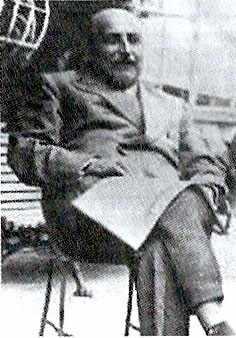 Pardo Roques (in the photo) – was murdered by the Nazis at his home in Pisa together with other ten individuals who were hiding there, of which six were also Jews.
Pardo Roques (in the photo) – was murdered by the Nazis at his home in Pisa together with other ten individuals who were hiding there, of which six were also Jews.
Freemasonry and Judaism have many affinities. Their rituals are similar and both consider the numbers to be greatly important, a theory which derives from the Jewish Kabbalah. They also share common characters and objects names and the position of the two columns at the entrance of their Lodges. Both Freemasonry and Judaism tell the story of the reconstruction of Salomon’s Temple and, in the past, both shared the need to operate in secrecy.
Elia Benamozegh (1823-1900) was a splendid representative of Italian Judaism. He was the Rabbi of the city of Leghorn in Tuscany and in his work “La Verite’ Israelite” he wrote: “The spirit of Freemasonry is the spirit of Judaism in its deepest convictions (…).
But I would also like to bring to your attention another aspect that is common to both Freemasonry and Judaism: “internationalism”. Indeed, no other Grand 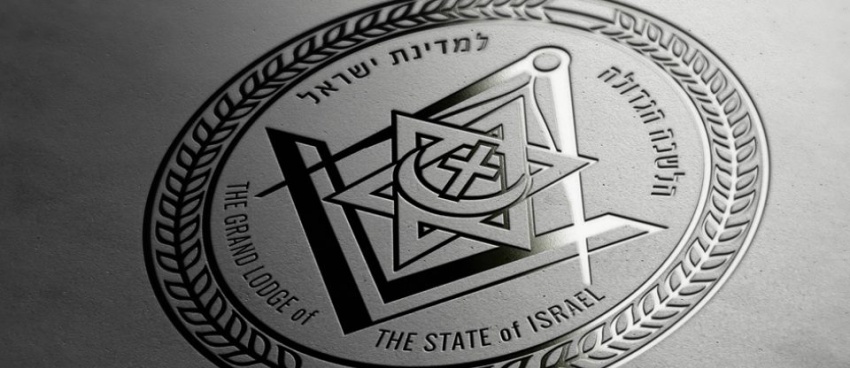 Lodge in the world is more cosmopolitan than that of Israel. Its official ritual languages are of course the Hebrew and the Arab, but there are also Lodges that work in English, French, Spanish, German, Romanian and Turkish. Each Lodge has three open books of the Sacred Laws laying next to each other on the pedestal: the Jewish Bible, the Christian Bible and the Koran, by which they teach men to work and think as one.
Lodge in the world is more cosmopolitan than that of Israel. Its official ritual languages are of course the Hebrew and the Arab, but there are also Lodges that work in English, French, Spanish, German, Romanian and Turkish. Each Lodge has three open books of the Sacred Laws laying next to each other on the pedestal: the Jewish Bible, the Christian Bible and the Koran, by which they teach men to work and think as one.
Other famous Italian-Jewish personalities are :
- Elia Rossi Bey (1814-1891) – Grand Master of the Menfis Rite
- Luigi Luzzatti (1841-1927), member of the House of Parliament, then Senator and professor of Constitutional Law at the University of Padua. He consolidated the value of the Lira internationally, promoted the cooperative movement and the Banche Popolari; inspired numerous Customs&Excise reforms.
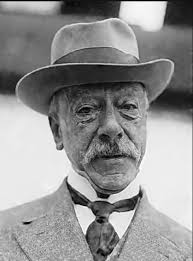
- Ernesto Nathan (1845-1921) in the picture – from Sara Levi and Mayer Moses Nathan – was politically influenced by Mazzini and became Mayor of Rome. He was initiated in the Lodge “I Rigeneratori” of Palermo and was the Grand Master of the Grand Orient of Italy for many years.
- Giacomo Venezian – born in Trieste (1861-1915). He took a degree at the University of Bologna where, later in life, he taught Civil Law. In 1915 he died leading his men in the Carso battle during the WWI whilst attacking the Austrian troops. His destiny mirrored that of his father Alceste De Seta Giona, who also fought against the enemies of Italy in the third war of independence.
- Cesare Goldmann – famous financier and politician, Worshipful Venerable Master of the Lodge “Pietro Micca”, Turin.
- Giacomo Treves and Raffaele Cantoni, legionnaires (private soldiers) of the Battle of Fiume in 1919;
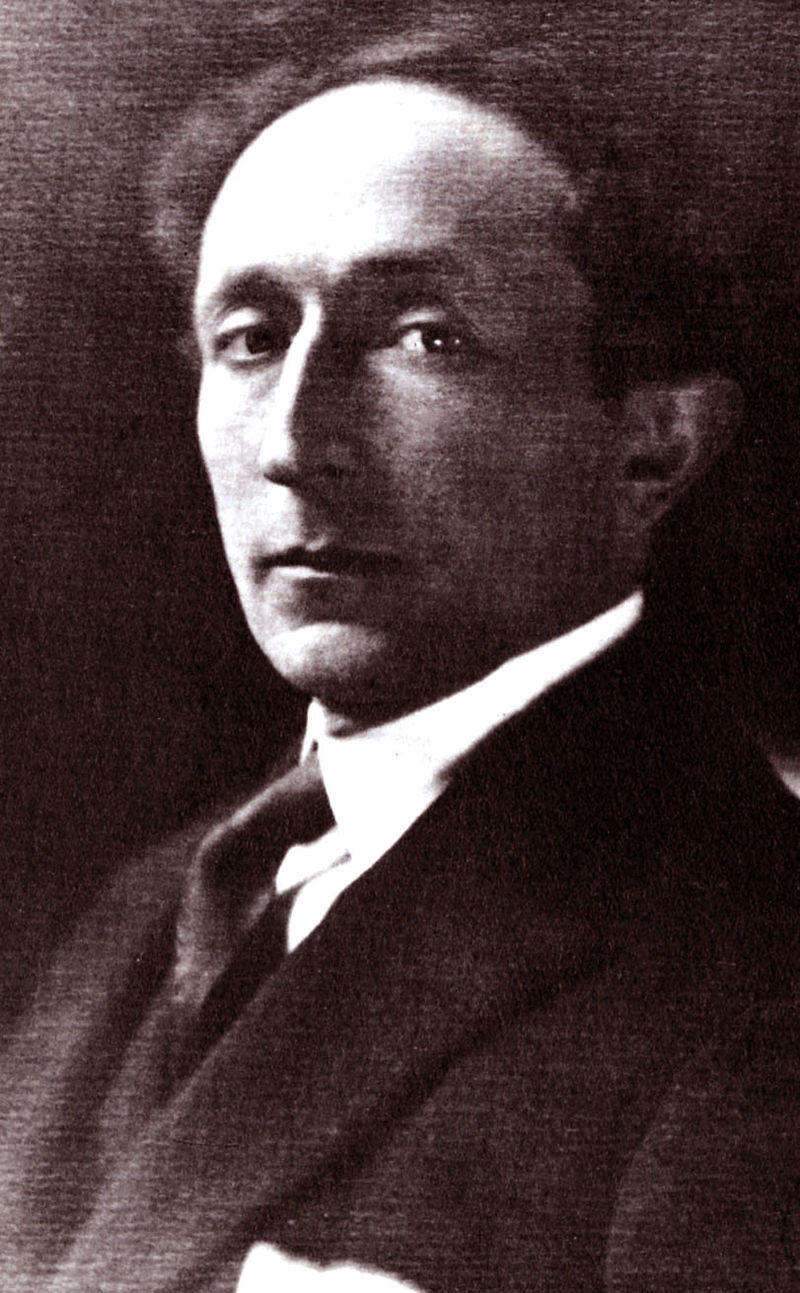 Gino Olivetti (in the picture) was an anti-fascist, director of the Confindustria – the equivalent of the CBI – and took over from his father Camillo as a member of the Italian Parliament. He was also Chairman of the Football Club Juventus.
Gino Olivetti (in the picture) was an anti-fascist, director of the Confindustria – the equivalent of the CBI – and took over from his father Camillo as a member of the Italian Parliament. He was also Chairman of the Football Club Juventus.- Roberto Ascarelli, an anti-fascist from Rome, who was initiated in the Loggia Rienzi, Rome 1923, became Worshipful Master of the Loggia Pisacane di Ponza and President of the R.S.I. (Rito Simbolico Italiano) in 1970.
Of absolute valour are the brothers Rosselli, connected with the movement “Justice and Freedom”; Leone Ginzburg, from a Russian Jewish family, who aged only six wrote: “I Ricordi di un giornalista in erba” and became a journalist for the newspaper “Corriere della Sera” at the young age of only 13.
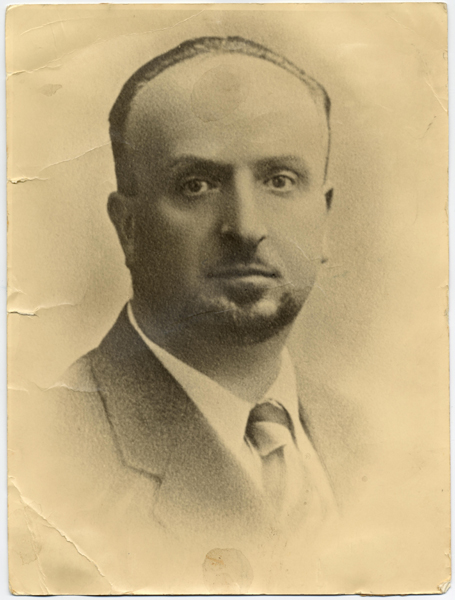 Mario Jacchia (in the photo) died the victim of a fascists’ dirty trick. In 1924 the “camice nere” broke into the Masonic Centre in Bologna and placed all the sacred items they found into a coffin which they left at Mario Jacca’s house in Via d’Azeglio 58, while he was away. He was later battered to death.
Mario Jacchia (in the photo) died the victim of a fascists’ dirty trick. In 1924 the “camice nere” broke into the Masonic Centre in Bologna and placed all the sacred items they found into a coffin which they left at Mario Jacca’s house in Via d’Azeglio 58, while he was away. He was later battered to death.
Angelo Fortunato Formaggini , from a Jewish family of jewellers, wasfamous for his literacy skill. He wrote, “Il tovagliolo di Formaggino” and the famous “La Ficozza”. Formaggini , led to despair by the racial laws, in 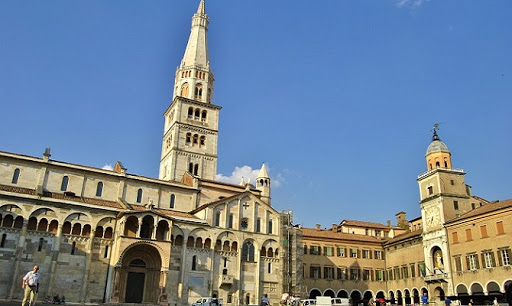 1938, threw himself off theTower of the Girlandina (see the picture) in Modena. The then prominent Fascist’s leader Achille Storace contemptuously commented the death with these words : “He killed himself like a Jew”, meaning that Formaggini rather than using a gun to commit suicide (and thus waste a bullet in the process!), chose the cheaper method of throwing himself off the city tower.
1938, threw himself off theTower of the Girlandina (see the picture) in Modena. The then prominent Fascist’s leader Achille Storace contemptuously commented the death with these words : “He killed himself like a Jew”, meaning that Formaggini rather than using a gun to commit suicide (and thus waste a bullet in the process!), chose the cheaper method of throwing himself off the city tower.
The census of 1938 shows that there were almost 6000 Jews in Tuscany, 4658 between Florence and Leghorn. After the Italian-Jews had been gathered in local concentration camps – like those of Bagni di Lucca, Bagni di Ripoli, Villa Oliveto, Roccatederigi and many others – they were sent off to the Nazi extermination camps. Out of the 8566 Italian-Jews who were deported there, 7557 were killed and to them, we send our deepest respect and love.
An old kabbalist’s song that the Jews chant after the beginning of the Shabbat (or Sabbath) goes thus: “Go in peace, angels of peace, angels of the Most High”.
Shalom Alaichem – Peace be with you!
An edited and rearranged translation of the article "Ebrei Massoni "by Giovanni Greco - Source: Rivista MASSONICAmente - No. 1 Sept-Dec 2014
[1] To be precise they were expelled from the Kingdoms of Castile and Aragon and its territories and possessions by 31 July 1492.
[2] that rests on a hill in northern Salento, between the major cities of Brindisi and Taranto
[3] It means “Isola della Rugiada del Signore” which I can best translate as: island of God’s Dew.
[4] Which included also those in Leghorn, Pisa , Viareggio and Pitigliano
- His Majesty’s Servant , David Garrick Esq – Freemason ? - June 7, 2024
- Influencia de la Masonería en Chile - April 29, 2024
- Pomegranate in Freemasonry – its significance - March 11, 2024

